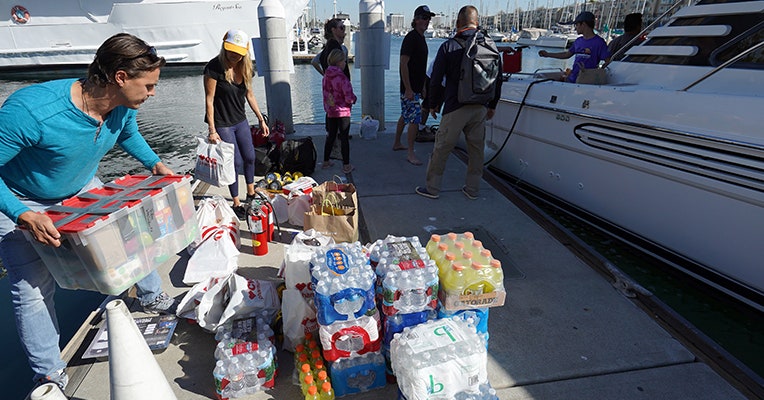Understanding Water Contamination Risks After Wildfires: A Look into Community Recovery Efforts
Wildfires devastate not only the natural landscape but also pose significant risks to vital infrastructure, particularly water systems. As seen in recent events, such as the devastating wildfires in Los Angeles and Colorado, the aftermath can leave entire communities grappling with unsafe drinking water. Understanding how these issues arise and the steps being taken to address them is crucial for communities at risk.
The Mechanics of Water Contamination
When firefighters tackle large-scale blazes, they often extract an enormous volume of water from local supply systems, typically far beyond what residential lines can handle. For instance, while a standard household water line can provide about 9 gallons per minute, firefighters can withdraw anywhere from 500 to 1,500 gallons per minute. This massive extraction leads to significant depressurization of water systems and allows potentially harmful bacteria and chemicals to infiltrate.
Whelton, a water systems expert, highlights that normally, high water pressure within the pipes keeps outside contaminants—like soil or chemical runoff—from entering the system. However, in the aftermath of a fire, ruptured pipes and structural damage can worsen the situation. Smoke, debris, and even sewage can enter the drinking water supply, compromising public health.
Case Studies: Lessons from Recent Fires
During the Marshall Fire in Louisville, Colorado, residents faced advisories to use tap water only for flushing toilets until comprehensive safety tests were conducted. With the recent wildfires in Los Angeles burning over 12,000 structures, the risk of similar contamination is dramatically heightened. The Los Angeles Department of Water and Power (LADWP) is now facing a crucial recovery period, during which experts will assess whether the water system can be flushed clean or if major infrastructure repairs are necessary.
Smaller water providers in regions like Altadena are at an even greater risk. With limited resources and personnel, these agencies may struggle with the complexities of recovery. For instance, during the CZU Lightning Complex Fire in 2020, Santa Cruz faced months of water service instability. McCurry points out that for some areas, the timeline for recovery could stretch into years, particularly if extensive overhauls of damaged systems are necessary.
Community Awareness and Response
In light of these challenges, staying informed is paramount. Water providers, cities, and counties issue "Do Not Drink" advisories. Residents are urged to proactively seek out information and share any alerts with their neighbors, especially to ensure non-English speakers receive critical updates. Some regions have successfully implemented public access maps to monitor water quality and keep the community informed, promoting transparency and vigilance.
Ensuring Safe Drinking Water
Before lifting any advisories, California law mandates that water providers test for benzene, a harmful chemical often present after fires. However, as noted by Whelton, benzene is not the sole concern. The range of potential contaminants is extensive, necessitating thorough testing that goes beyond just monitoring for a single chemical. Substances may linger longer than expected in the water supply, presenting ongoing risks.
Residents can enhance their safety by using activated charcoal filters, which can reduce some organic contaminants, though these may not eliminate all potential hazards. Staying vigilant and informed remains their best line of defense.
The Road to Recovery
Recovering safe drinking water in the wake of wildfires is a complex and collaborative process. "Safe water can be restored after a fire," Whelton asserts, emphasizing the importance of community cooperation. The most resilient communities are those that band together, share information, and support recovery efforts.
In conclusion, as wildfires become more common and devastating, understanding their impact on essential services like water is critical. By fostering community awareness and engagement, we can build a stronger foundation for recovery and resilience in the face of future environmental challenges.










